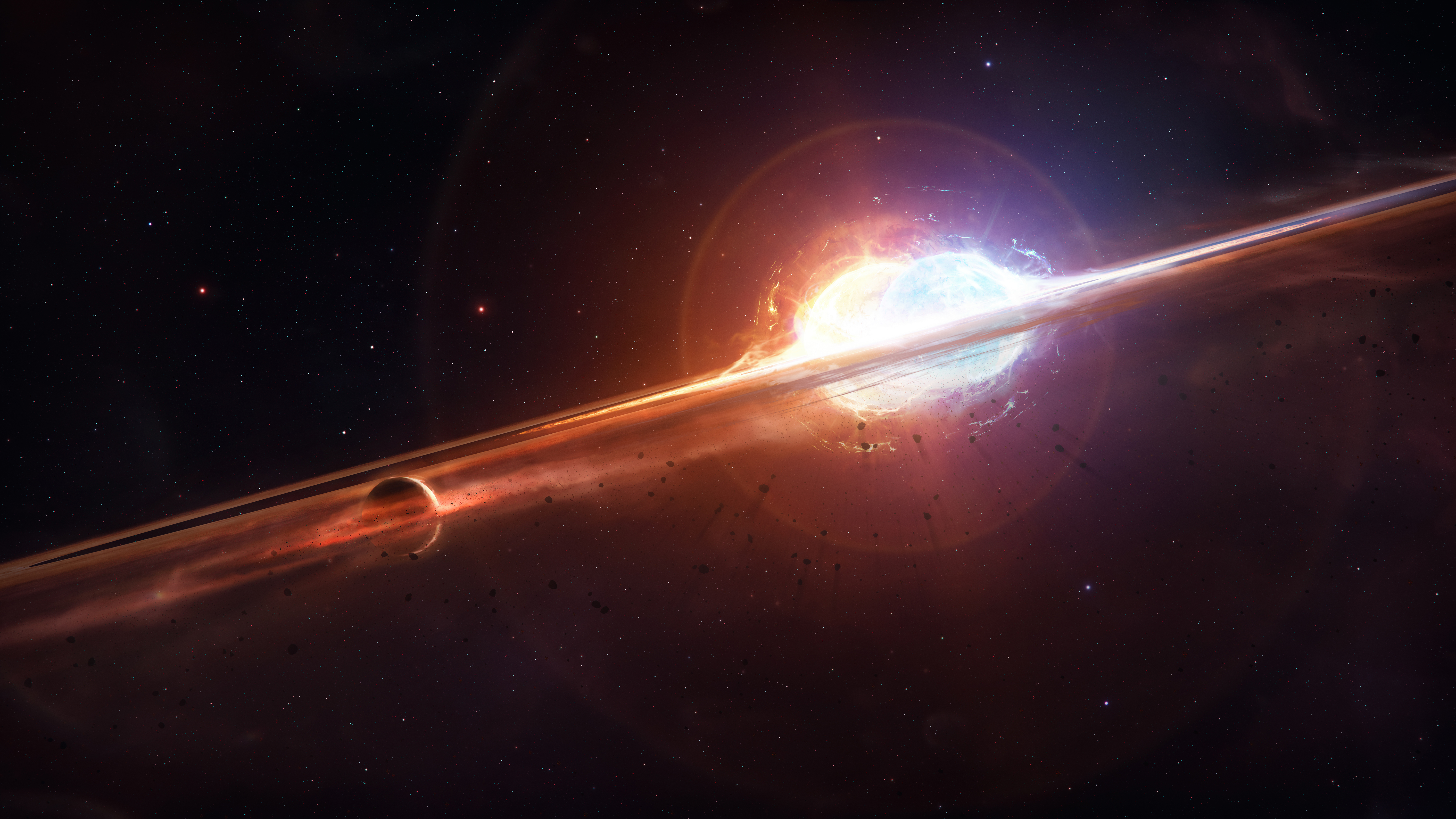Media release
From:
When our Sun reaches the end of its life in five billion years, it will expand 100 times its current size, likely enveloping the Earth in hot plasma, destroying our rocky home. Many planets in other solar systems face a similar doom once their host stars grow old.
But hope is not lost for all planets. An international team including University of Sydney astronomers has made the remarkable discovery of a planet’s survival after what should have been certain death at the hands of its sun, a star in the ‘Little Bear’ constellation Ursa Minor.
The Jupiter-like gas planet 8 UMi b, named Halla, closely orbits the giant star Baekdu. In a first for astronomy, a team – including Dr Dan Huber and Professor Tim Bedding from the University of Sydney – has discovered that Halla survived a period of violent stellar transition that would normally have destroyed close-in planets.
Their findings are published today in the prestigious journal, Nature.
Using observations of Baekdu’s stellar oscillations from NASA’s Transiting Exoplanet Survey Satellite (TESS), the scientific team found that the star is burning helium, rather than hydrogen, in its core, signaling that it had once expanded enormously into a red giant star.
“Engulfment by a star normally has catastrophic consequences for close orbiting planets. When we realised that Halla had managed to survive in the immediate vicinity of its giant star, it was a complete surprise,” said Dr Huber, second author of the study and Australian Research Council Future Fellow in the School of Physics and Sydney Institute for Astronomy.
“As it exhausted its core hydrogen fuel, the star would have inflated up to 1.5 times the planet’s current orbital distance – engulfing it completely in the process – before shrinking to its current size.”
Baekdu is one of the stars in the ‘Little Bear’ constellation, or Ursa Minor. It is nearly 11 times the radius of our Sun, with 1.6 times its mass.
Mauna Kea telescopes confirm the survivor
The planet Halla was discovered in 2015 by a team of Korean astronomers using the radial velocity method, which measures the periodic gravitational tug of the orbiting planet on its star, which is about 520 light years from Earth.
Following the discovery that the star must at one time have been larger than the planet’s current orbit, the team conducted additional observations from 2021 to 2022 using the W. M. Keck Observatory and the Canada-France-Hawaii Telescope on Mauna Kea, Hawai‘i.
These new data confirmed that the planet’s 93-day, nearly circular orbit had remained stable for more than a decade and that the radial velocity changes observed in the star must be due to this orbiting planet.
“Together, these observations confirmed the existence of Halla, leaving us with the compelling question of how the planet survived,” said lead author, Dr Marc Hon from the University of Hawai‘i. “The observations from multiple telescopes on Maunakea were critical in this process.”
Escaping engulfment
At a distance of 0.46 astronomical units (equivalent to almost half the distance from Earth to the Sun) to its star, the planet Halla resembles ‘warm’ or ‘hot’ Jupiter-like planets, so-called due to their proximity to stars. These gas giants are thought to have started their lives in orbits much further out from their stellar hosts before migrating inward.
However, in the face of a rapidly evolving host star, such an origin story becomes an extremely unlikely survival pathway for the planet Halla.
“We just don’t think Halla could have survived being absorbed by an expanding red giant star,” Dr Huber said.
A more plausible theory for the planet’s survival is that it never faced the danger of engulfment.
“The system was more likely similar to the famous fictional planet Tatooine from Star Wars, which orbits two suns,” Professor Bedding said.
“If the Baekdu system originally consisted of two stars, their merger could have prevented any one of them from expanding sufficiently to engulf the planet.”
This is because the two stars would have ‘fed’ off each other during the transition from hydrogen burning stars to what Baekdu is now, a helium burning red giant star.
A third possibility is that Halla is a newborn planet: that the violent collision between the two stars produced a gas cloud from which the planet formed. In other words, the planet Halla may be a ‘second-generation’ planet in the star system.
Unlike our Solar System, most stars are in binary pairs, but we don’t yet fully grasp how planets form around them. Therefore, it is plausible that more planets may exist around highly evolved stars thanks to such binary interactions.
As the first known close-in planet around a core-helium burning star, Halla shows that exoplanet discoveries might still surprise us by appearing around stars where they are least expected.
Many of the thousands of identified exoplanets are in orbits very close to their host stars. Working together, stellar and planetary scientists will be able to use this new discovery about Halla to better understand whether death-by-star is a fate shared by all such close-in planets.
A close-in giant planet escapes engulfment by its star DOI: 10.1038/s41586-023-06029-0
ACKNOWLEDGEMENT
The researchers recognise and acknowledge the cultural role and reverence that the summit of Mauna Kea has within the indigenous Hawaiian community. They are grateful for the opportunity to conduct observations from this mountain.
DECLARATION
Researchers received financial support from NASA; the Alfred P. Sloan Foundation; the Australian Research Council; the US National Science Foundation Graduate Research Fellowship; the Swedish Research Council; the European Research Council; and Portugal’s Fundação para a Ciência e a Tecnologia.
Multimedia






 Australia; International; NSW
Australia; International; NSW


